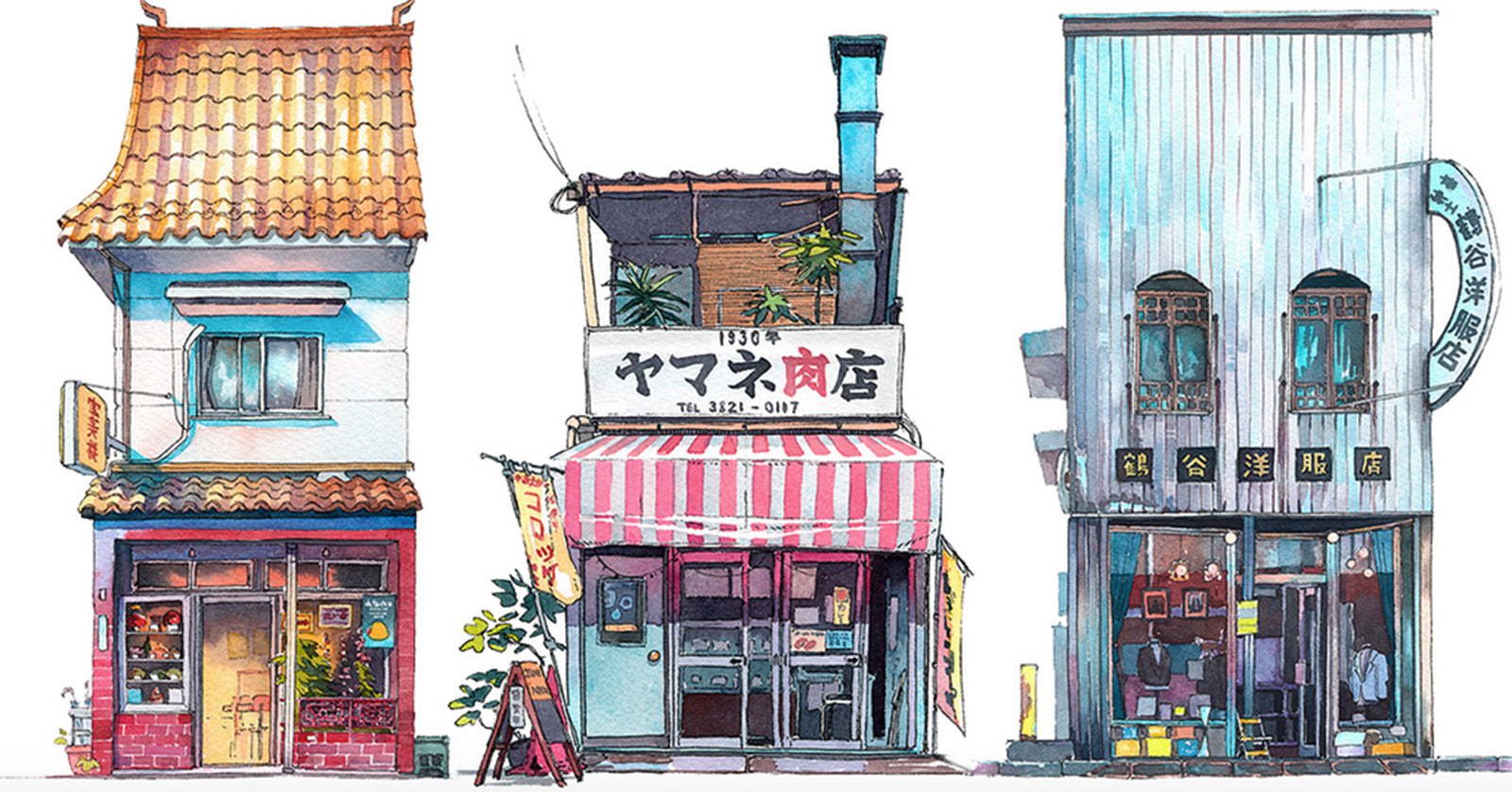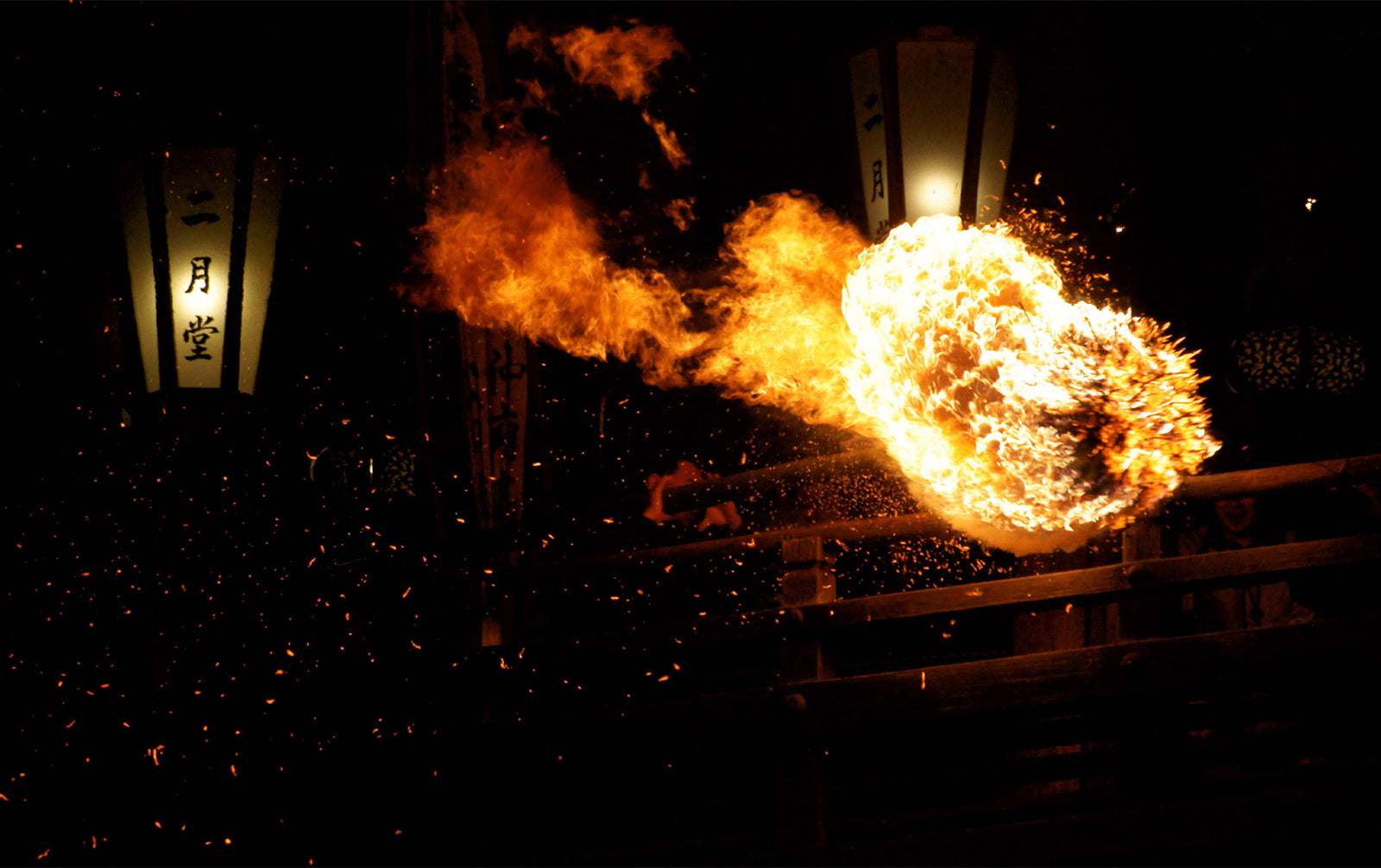
THE BOOK “TOKYO SHOPS” IS AN ILLUSTRATED JOURNEY ON PAPER
Have you ever been catapulted back in time thanks to a book? The art of Mateusz Urbanowicz depicted in the volume “ Botteghe di Tokyo ”, a collection of hand-drawn illustrations of ancient workshops and published in Italy by L'Ippocampo in 2021, has this extraordinary ability.
Anyone, in addition of course to those who have already visited the country of the Rising Sun, to watercolor enthusiasts or to those of anime and manga , will be fascinated to recognize the familiarity of these little shops, which have always characterized the episodes of the famous Japanese cartoons.  The cover of the book “Botteghe di Tokyo” by the artist Mateusz Urbanowicz © Ippocampoedizioni
The cover of the book “Botteghe di Tokyo” by the artist Mateusz Urbanowicz © Ippocampoedizioni
If you are wondering what a Polish artist has to do with Japan, here it is immediately explained: Urbanowicz moved to Kobe many years ago to undertake a course of study related to animated cinema . He subsequently moved to Tokyo, where he currently resides, as an environment designer for film sets.
In the first years of his stay in the Land of the Rising Sun, walking in the ancient neighborhoods of the capital, he discovered countless little-known views that became a source of inspiration for him. Thanks to his passion for architectural details, in 2016 he created ten watercolor paintings representing the old shops of Tokyo . Given their enormous success, he decided to expand the series with another 40 plates from as many workshops, which he published in what became the guide book for lovers and nostalgics of the traditional city , as opposed to an increasingly Westernized Tokyo.  The artist Urbanowicz at work with his watercolors © Time Out
The artist Urbanowicz at work with his watercolors © Time Out
It is interesting to know in depth how these illustrations were created, as he himself recounts in the book: as he gradually found a particular shop of interest to him, Urbanowicz tried to find out about its history , both by talking to the owners (if still alive) or with local people, either by exploring the interiors of the structure. He then photographed the building from the outside and then faithfully reproduced it by hand in the form of a drawing, coloring it with watercolours. In the case of buildings that were not intact, the designer relied on local stories to reconstruct the ancient shop piece by piece.
The book depicts traditional shops of all kinds, all represented with careful meticulousness: from the Sakae-Ya restaurant , a milk bar which has now become a ramen and curry restaurant, to the Seishin-Do bookshop specializing in ancient bound books, from the Hokkai bakery with its showy ornamental plants, to Maru-Ya footwear , a shop selling traditional shoes such as geta and zori; From the Ubukeya cutlery, seller of blades, scissors and razors, to the bicycle, brush and chiyogami shops, traditional Japanese papers engraved and painted on wood. Most of them date back to the Showa period , between 1926 and 1989. Some, however, originated even earlier, i.e. in the 1700s and 1800s, renovating the exteriors only in the last century.  The watercolor illustration of the Hokkai bakery contained in the book © Ippocampoedizioni
The watercolor illustration of the Hokkai bakery contained in the book © Ippocampoedizioni
This collection also has a curious peculiarity for Italians who know and love the Japanese language: every single illustration is accompanied by a description in Japanese with the relative translation into Italian . Definitely an advantageous way to learn a few more words!
Urbanowicz also introduced each shop by highlighting particular architectural details and combining curiosities and singular anecdotes linked to its construction, even the address where they can be seen. In fact, among the pages of the book it is possible to find a general map of the neighborhoods where the ancient shops are located , despite the fact that some of them have now been demolished (or are close to being demolished) or have become city homes.  The book shops and neighborhoods represented in “Tokyo Shops - The Exhibition” at TENOHA Milan in recent months
The book shops and neighborhoods represented in “Tokyo Shops - The Exhibition” at TENOHA Milan in recent months
In short, this book is an authentic guide if you want to take an evocative journey into the past , among the wonderful and captivating shops of Tokyo, especially in particular "pandemic" times in which there is no freedom to travel from one country to another. The objective of this publication is to make a greater public appreciate and preserve historic traditional buildings , preserving their memory on paper.



